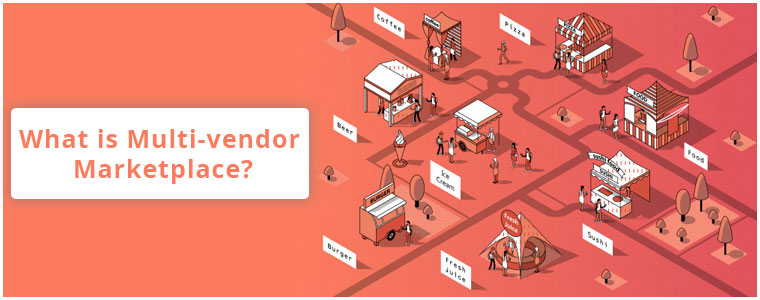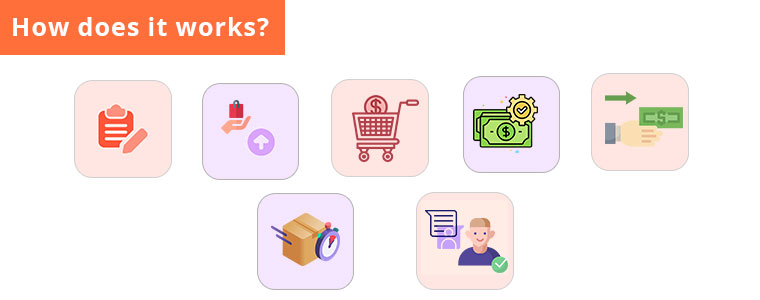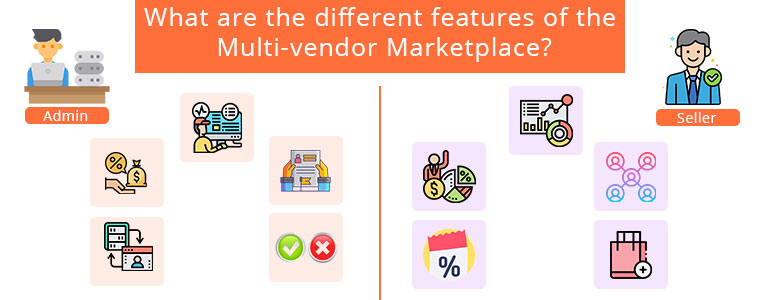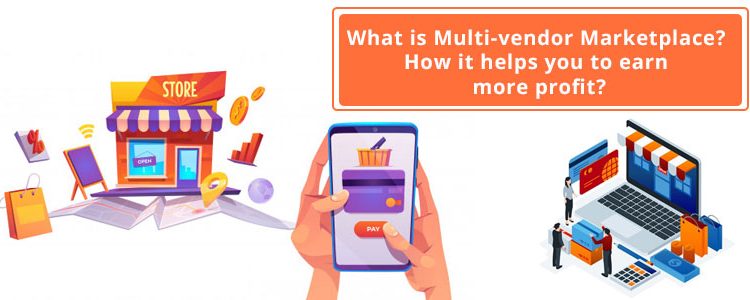With the fast growth of eCommerce in the past few decades, trends are slowly moving towards providing a fast-paced shopping experience to buyers. Now, buyers don’t want to spend time searching through ten websites to find one item.
They want consolidated data that helps them with faster decision making and aids in saving time and effort. The answer to this changing environment is multi-vendor eCommerce marketplace. They are the answer to eCommerce marketers who are looking for ways to improve their store and push it to the next level.
What is Multi-vendor Marketplace?

As the name suggests, a multi-vendor marketplace or store is a platform for third-party sellers to sell at one place. In simple terms, it is a big store that contains various small shops that are run by individual vendors.
Let’s take an example, think of it as a mall that is owned by you that delivers products to people’s homes. As the meaning is clear, your mall contains many small stores. The responsibility of running each store lies with the different individual store owners whereas the more focus of storing the products, delivering them to people’s homes, and accepting payments lies with you.
Now, think this mall is an online eCommerce setup. Your mall becomes a marketplace, the small shops are the vendor’s stores, and you are responsible for the order management, shipping management, and collecting payments.
How does it works?

A multi-vendor marketplace works efficiently and effectively with store owners and vendors. It is necessary to keep the communication straight and keep the customers updated about various offers as well as ensure the product is delivered right on time. Here are a few steps on how a multi-vendor market place works :
- The vendors register with the marketplace through paid or even free registration.
- Once the vendor registers and uploads his products, the customers can start purchasing from them.
- Store admin of the multi-vendor market place can charge a small fee on each transaction.
- Most of the payments are transferred to the store admin, and from there to the seller chosen.
- Product delivery is handled by the vendor itself or even the admin.
- Communication on faulty products can be conveyed to the vendor or even the store admin, which the seller handles.
Why more and more store owners are moving from e-commerce website to a multi-vendor marketplace platform?
Here are the reasons for this marketplace change:
- Variety of products
The products sold on a multi-vendor marketplace are featured by a number of sellers. Any e-commerce store that offers a huge variety of products is bound to easily engage more traffic and sales. If eBay and Etsy were to import all the products from one vendor, do you think they would have been able to engage as many sales as they do now?
- It takes away most of the headache
Taking care of deliveries, inventories, product details & upgrades, pricing and various other information that comes with running an online store requires lots of effort. Multi-vendor marketplace shifts these important evils to individual sellers.
- Lesser expenses
Because every vendor will be managing his shop on their own, you don’t need to hire resources to do it. You can invest more time on answering critical questions related to scaling and marketing.
- Flexibility
Vendors on multi-vendor e-commerce platforms can handle product information, prices, and areas of shipment, make additions, and updates as per their requirements.
- Cash Flow through Commissions
Since the multi-vendor marketplace can have a number of vendors, it earns by taking a commission on each transaction between the sellers and the customers.
What are the different features of the Multi-vendor Marketplace?

The features of the multi-vendor marketplace are separate for store admins and vendors. Firstly let’s talk about admin features.
Admin Features:
- Admin can easily monitor and manage their sellers.
- Admin can charge a commission from the sellers. It can be either a category level or seller level.
- Admin can add a separate registration section for the sellers. So, that the sellers can register themselves easily on the marketplace.
- Admin can track the overall transactions of the sellers from their back interface.
- Admin can approve or disapprove the products added by the sellers.
- Admin can also approve or disapprove the category request send by the sellers.
Seller Features:
- Sellers can get an interactive seller dashboard.
- Sellers can track their earnings easily.
- Sellers can link their social accounts to their marketplace profile.
- Sellers can add coupons to their store to give exciting offers to their customers.
- Sellers can request a category request to add more products in it.
Different Multi-vendor marketplaces:
We provide various extensions which help you to convert your e-commerce store into a fully functional multi-vendor marketplace. These extensions not only helps you to increase popularity but also helps to increase your profit.
Prestashop Multi-vendor marketplace: Knowband offers PrestaShop Marketplace addon to help the PrestaShop store owners to create their own marketplace allowing the multiple sellers to sell their products.
Opencart Multi-vendor marketplace: Knowband offers OpenCart Marketplace plugin that can easily turn your single-vendor site into a fully-functional marketplace.
Magento 2 Multi-vendor marketplace: Knowband offers Magento 2 Marketplace addon to help the Magento 2 store owners to create their own marketplace allowing the multiple sellers to sell their products.
Conclusion:
If you are also thinking to convert your online store into a marketplace then this is the best time for you. A multi-vendor marketplace is a single answer for different questions. Build your online marketplace with the empowering features of our extension solutions.



